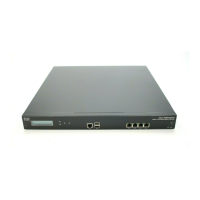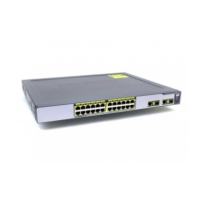n Port is the IP port number that has been configured from Configuration > Protocols > SIP as the port for
that particular transport protocol.
_sip._udp is not recommended because SIP messages for video systems are too large to be carried on a
packet based (rather than stream based) transport. UDP is often used for audio only devices. Also, UDP
tends to be spammed more than TCP or TLS.
Example DNS record configuration
A company with the domain name example.com wants to enable incoming H.323 and SIP calls using URI
addresses in the format user@example.com. The VCS hosting the domain has the FQDN
vcs.example.com.
Their DNS records would typically be as follows:
n SRV record for _h323ls._udp.example.com returns vcs.example.com
n SRV record for _h323cs._tcp.example.com returns vcs.example.com
n SRV record for _h323rs._tcp.example.com returns vcs.example.com
n NAPTR record for example.com returns
l _sip._tcp.example.com and
l
_sips._tcp.example.com
n SRV record for _sip._tcp.example.com returns vcs.example.com
n SRV record for _sips._tcp.example.com returns vcs.example.com
n A record for vcs.example.com returns the IPv4 address of the VCS
n AAAA record for vcs.example.com returns the IPv6 address of the VCS
How you add the DNS records depends on the type of DNS server you are using. Instructions for setting up
two common DNS servers are given in the DNS configuration examples [p.383] section.
For locally registered H.323 endpoints to be reached using URI dialing, either:
n the H.323 endpoints should register with the VCS using an address in the format of a URI
n an appropriate transform should be written to convert URIs into the format used by the H.323 registrations.
An example would be a deployment where H.323 endpoints register with an alias, and incoming calls are
made to alias@domain.com. A local transform is then configured to strip the @domain, and the search is
made locally for alias. See Stripping @domain for dialing to H.323 numbers [p.186] for an example of how
to do this.
SIP endpoints always register with an AOR in the form of a URI, so no special configuration is required.
Several mechanisms could have been used to locate the VCS. You may want to enable calls placed to
user@<IP_address> to be routed to an existing registration for user@example.com. In this case you
would configure a pre-search transform that would strip the IP_address suffix from the incoming URI and
replace it with the suffix of example.com.
URI dialing and firewall traversal
If URI dialing via DNS is being used in conjunction with firewall traversal, DNS zones should be configured
on the VCS Expressway and any VCSs on the public network only. VCSs behind the firewall should not have
any DNS zones configured. This will ensure that any outgoing URI calls made by endpoints registered with
the VCS will be routed through the VCS Expressway.
Cisco VCS Administrator Guide (X8.1.1) Page 209 of 507
Dial plan and call processing
About URI dialing

